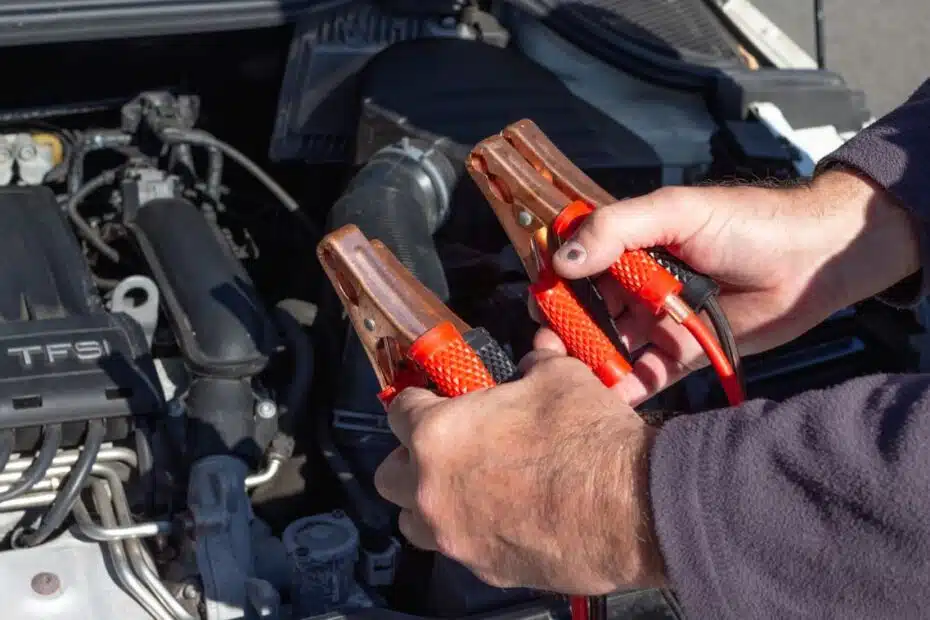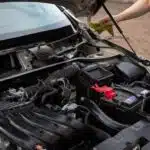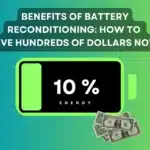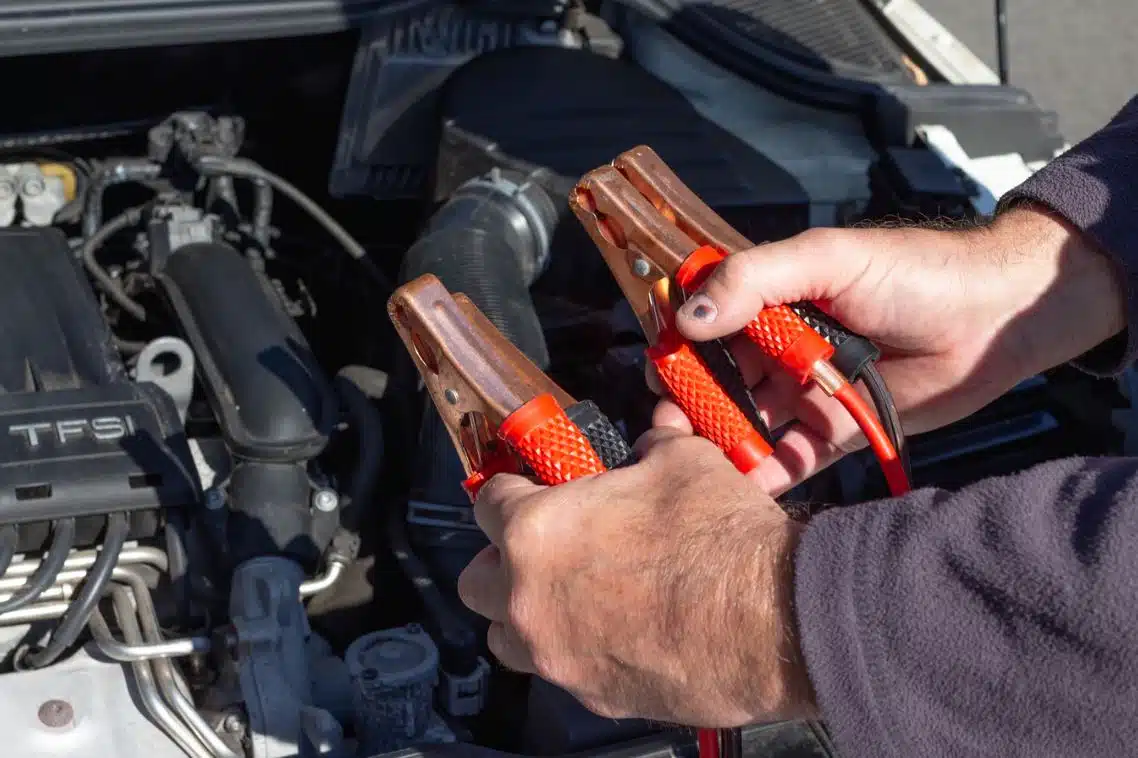Are you tired of constantly buying new car batteries because your old ones won't hold a charge? Well, I have good news for you! You can recondition your car battery with just a few household items and a little elbow grease. Here's an Ultimate Guide on How To Recondition A Car Battery That Won't Hold Charge!
Reconditioning your car battery is easier than you think. In fact, not only will this save you money on purchasing a new battery, but it's also a great opportunity to learn something new and save the environment by reducing waste.
Well, grab a cup of coffee, and let's dive into the world of car battery reconditioning right from the comfort of your home!
Table Of Contents
- 1 Recondition A Car Battery That Won't Hold Charge At Home
- 2 Steps to Recondition a Car Battery
- 3 3 Different Methods You Can Use to Recondition Your Car Battery
- 4 Method 1: Recondition Your Car Battery Using Epsom salt and distilled Water
- 4.1 Step 1: Gather your materials
- 4.2 Step 2: Remove the battery from your car.
- 4.3 Step 3: Clean the battery
- 4.4 Step 4: Make the Epsom salt solution
- 4.5 Step 5: Fill the battery cells with the solution
- 4.6 Step 6: Let the battery soak
- 4.7 Step 7: Check the battery’s voltage
- 4.8 Step 8: Drain the solution
- 4.9 Step 9: Fill the battery with distilled water
- 4.10 Final Step: Reinstall your reconditioned car battery
- 5 Method 2: Recondition A Car Battery Using A Smart Battery Charger
- 6 Tips On How To Extend Battery Lifespan
- 7 Conclusion
- 8 Frequently asked question
Recondition A Car Battery That Won't Hold Charge At Home
Safety Precautions You Need to Consider
First and foremost, let's talk about safety. When working with batteries, it's important to take precautions to avoid injury and damage to the battery and your vehicle. Then Make sure to wear gloves and eye protection, and work in a well-ventilated area.
Now that we've covered the safety precautions, let's move on to the tools and materials you'll need to recondition your car battery.
Tools and materials needed
To get started, you'll need a few tools:
- Gloves
- Eye protection
- Clean cloths
- Distilled water
- A battery charger
- A multimeter
- A wrench
Now, let's talk about how car batteries work. Most car batteries are lead-acid batteries, which use a chemical reaction to produce electricity. Over time, this reaction can cause the buildup of lead sulfate on the battery plates, reducing their ability to hold a charge.
Before we dive into the steps & different Methods, I want to give you a quick recommendation that I think could be helpful for you. If you want to take your battery reconditioning skills to the next level, I highly recommend checking out The EZ Battery Reconditioning Course. It's a comprehensive guide that will teach you everything you need to know about reconditioning all types of batteries, not just car batteries.
Steps to Recondition a Car Battery
To recondition a car battery that won't hold charge, here is a step-by-step guide that you can follow:
1. Check the Battery
Inspect the battery for physical damage, leaks, or other visible issues. If the battery is severely damaged, reconditioning might not be possible, and it's safer to replace it.
2. Clean the Battery Terminals
Disconnect the battery from the vehicle and clean the terminals and cable connectors using a mixture of baking soda and water. Use a wire brush to remove corrosion. Clean both the battery terminals and the cable ends thoroughly.
3. Check Electrolyte Levels
If your battery is a traditional flooded lead-acid type, check the electrolyte levels in each cell. Add distilled water to bring them up to the appropriate level if the levels are low. Do not overfill.
4. Desulfation
Sulfation (the buildup of lead sulfate crystals) is a common cause of battery failure. You can attempt to break down these crystals by using a desulfating charger. These chargers send electrical pulses through the battery to break down the sulfate crystals, potentially improving the battery's performance. Follow the manufacturer's instructions carefully.
5. Slow Charge
Use a low amp (trickle) charger to charge the battery slowly. Slow charging over a long period (like 24-48 hours) can sometimes reverse the sulfation process. Make sure you use a charger designed for car batteries and set it to the appropriate voltage and current for your battery.
6. Load Test
After slow charging, perform a load test using a battery load tester. This will help you assess whether the battery can hold a charge under load. If the battery fails the load test, it might not be suitable for reconditioning, and you should consider replacement.
7. Recharge and Monitor
If the battery passes the load test, fully recharge it with a regular battery charger. After recharging, monitor the battery closely. If it holds the charge and continues to work well in your vehicle, it might have been successfully reconditioned.
Important Notes:
- Caution: Working with car batteries can be dangerous. If you're not comfortable or experienced with this process, it's safer to seek professional help or replace the battery.
- Environmental Disposal: If the battery cannot be reconditioned, it's essential to dispose of it properly at a recycling center or an auto parts store that accepts used batteries.

Remember that reconditioning a car battery is not always successful, especially if the battery is very old or has significant internal damage. It's often a trial-and-error process, and there are no guarantees of success, so I recommend you use Tom Ericson's battery reconditioning guide it will help you with detailed instructions to determine if a car battery can be reconditioned or not and do it safely!
Now that you know the steps to recondition a car battery let's dive into methods you can use to do it safely!
3 Different Methods You Can Use to Recondition Your Car Battery

Here are three methods you can use to recondition your car battery that won't hold a charge:
- Method 1: Recondition Your Car Battery Using Epsom salt
- Method 2: Using a smart charger
- Method 3: Use a 200A charger to revive your battery. (It’s essential to note that this method can be dangerous, and your battery may explode, so let's focus on the first two methods.)
It's time to get your hand dirty and get an overview of what each method involve!
Method 1: Recondition Your Car Battery Using Epsom salt and distilled Water
To recondition your car battery using Epsom salt, you must follow a few steps:
Step 1: Gather your materials
- Epsom salt
- Distilled water
- A funnel
- A clean cloth
- Safety gloves and eye protection
- A battery hydrometer or voltage meter
Step 2: Remove the battery from your car.
Before you start the reconditioning process, make sure to disconnect the negative cable first, and after the positive cable. Now, you can then safely remove the battery from your car.
Step 3: Clean the battery
Use a clean cloth to remove any dirt or debris from the surface of the battery. This will ensure that you have a clear place I mean surface, for adding the Epsom salt solution.
Step 4: Make the Epsom salt solution
In a clean container, mix 2 cups of Epsom salt with 1 gallon of distilled water. Make sure to stir the solution well until the Epsom salt is fully dissolved.
Step 5: Fill the battery cells with the solution
Use a funnel to pour the solution into each cell of the battery, making sure to fill them to the appropriate level. The solution should be at the same level as the electrolyte in the battery.
Step 6: Let the battery soak
Allow the battery to soak in the Epsom salt solution for at least 12 hours, or overnight if possible. This will give the solution time to penetrate the battery and break down any sulfates that have built up on the battery’s plates.
Step 7: Check the battery’s voltage
After the battery has soaked, use a battery hydrometer or voltage meter to check the battery’s voltage. If the voltage is below 12.4 volts the battery needs more time to soak. But if it is above 12.4 volts, then the battery is ready for the next step.
Step 8: Drain the solution
Use a clean cloth to wipe away any excess solution, then use a hose or bucket of distilled water to rinse the battery. Make sure to remove all the Epsom salt solution from the battery.
Step 9: Fill the battery with distilled water
Once the battery is clean, use a funnel to fill each cell with distilled water to the appropriate level. Ensure not to overfill the cells, as this can cause damage to the battery.
Final Step: Reinstall your reconditioned car battery
Carefully place the battery back into your car, making sure to connect the positive cable first, then the negative cable. Turn on the car to test if the battery is holding a charge. Congratulations! You’ve just reconditioned your car battery using Epsom salt and it’s now ready to hold a charge like a boss!

We have done with the first method, so let's move on to the next method: recondition a battery using a smart battery charger!
Method 2: Recondition A Car Battery Using A Smart Battery Charger
Before we dive into this method, it's essential to have the right charger. Look for a charger that has a recondition mode, which is typically indicated by the label “desulfation mode.” This mode will help to remove any buildup of sulfate on the battery plates, which is one of the most common causes of a dead battery. Ok now let's move on.
Step 1: Gather Your Supplies
–A smart battery charger
-The battery that won't hold a charge
Step 2: Prepare The Battery
Take the battery out of your car and clean the terminals with a wire brush to remove any corrosion. This will help ensure that the charger can make good contact with the battery and recondition it effectively.
Step 3: Connect The Charger
Next, attach the charger to the battery, following the manufacturer's instructions. Most smart battery chargers have built-in safety features to prevent overcharging, so you don't have to worry about damaging the battery.
Step 4: Start The Battery Reconditioning Process
Turn on the charger and select the “desulfation mode” or “recondition mode.” The charger will then start charging the battery and reconditioning it at the same time. The process can take anywhere from a few hours to a few days, depending on the battery's condition and the type of charger you’re using.
Step 5: Check the Progress
Check the progress of the reconditioning process by monitoring the battery's voltage. Most smart battery chargers will display the voltage on their screen, and you can use a multimeter to confirm the voltage as well. When the voltage reaches a certain level, the charger will automatically stop the reconditioning process.
Step 6: Reinstall the Battery
Once the reconditioning process is complete, you can reinstall the battery in your car. Make sure you connect the battery correctly and check for any leaks or damage to the battery or the charger.
Step 7: Test the Battery
Let's perform the final step, test the battery to make sure it's holding a charge. Start the car and let it run for a few minutes. If the battery is holding a charge, congratulations! You’ve successfully reconditioned your car battery using a smart battery charger.
Tips On How To Extend Battery Lifespan
Extending the lifespan of your batteries is important if you want to get the most value out of them. Here are some tips for extending battery lifespan:
- Store batteries properly: Store batteries in a cool, dry place and avoid exposing them to extreme temperatures.
- Charge batteries regularly: Avoid letting batteries discharge completely and recharge them regularly to keep them healthy.
- Use the right charger: Use a charger that's specifically designed for your battery type and avoid overcharging it.
- Keep batteries clean: Dirt and grime can reduce battery performance, so make sure to keep your batteries clean and free of debris.
- Avoid over-discharging: Over-discharging a battery can damage it, so make sure to avoid draining your batteries too much.
- Monitor battery performance: Keep an eye on your battery's performance and replace it if you notice any significant decline in its ability to hold a charge.
- Regularly check for swelling: Swelling is a sign of a damaged battery and should be replaced as soon as possible.
- Store batteries correctly if not in use. If you're not using your batteries for an extended period, store them in a cool, dry place and avoid exposing them to direct sunlight. So, you can help maintain the health of your batteries and extend their lifespan by following these tips
Conclusion
Reconditioning your car battery using Epsom salt solution and distilled water or using a smart battery charger is a simple and effective solution for reviving a battery that won’t hold a charge.
If you follow these steps, you can save money and keep your car's battery working for longer. But, remember to always follow safety precautions when working with batteries and choose a charger that is specifically designed for reconditioning car batteries.
I hope this article was helpful and informative, and if you're interested in learning more about battery reconditioning, I recommend checking out the Ez battery reconditioning review.
Also, if you want to know your battery condition, read my article about signs that your car battery is about to die.

Related Articles
- Car Battery Won't Hold Charge Why: How to Fix
- Signs Your Car Battery Is About To Die: How To Be Sure
- Reasons Why You Should Buy EZ Battery Reconditioning Today
- Benefits of Battery Reconditioning: Save Hundreds of Dollars Now!
<< Learn more about the EZ Battery Reconditioning Program
Frequently asked question
Reconditioning a car battery that won't hold a charge is a process that involves attempting to restore the battery to a usable condition.
Here are steps that resume how to recondition a car battery that won’t hold a charge:
Safety First:
Safety Gear: Wear appropriate safety gear, including gloves and safety glasses, to protect yourself from battery acid and other hazardous materials.
Ventilation: Work in a well-ventilated area or, better yet, outdoors.
Steps to Recondition a Car Battery:
1. Check the Battery: Inspect the battery for physical damage, leaks, or other visible issues. If the battery is severely damaged, reconditioning might not be possible, and it's safer to replace it.
2. Clean the Battery Terminals
3. Check Electrolyte Levels
4. Desulfation
5. Slow Charge
6. Load Test
7. Recharge and Monitor
Check the full step-by-step guide article & different methods on how to recondition a car battery that won't hold charge





